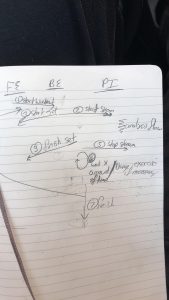Last week I was working primarily with our hardware, setting it up both for Scott to be able to connect with Kinesis, and also writing a script to take a large number of images and label them. This is going to be hugely helpful for collecting a training set for our workout classifier. The script takes three pictures a second for sixty seconds (180 images), and stores them locally. For the purposes of training our workout classifier I plan to store the images on my laptop, with each member of the team doing each workout once or twice for a minute in front of the camera I’ll have about 1,000 images of each workout to start training with.
I was also working on the physical box that we’re going to be putting our Pi and camera in. I went through the process of spec-ing and designing an entire case and stand before realizing buying a case online was going to be cheaper than buying the parts to build my own case.
In the coming week I’ll be working on Greek Sing a lot so I expect it to be a slow week, but I plan to help Scott get the Pi connected to Kinesis so we can use the OpenPose instance he has set up on AWS. I’ll also continue working with the hardware to get it connected to the internet and running how we want it to be (as well as exploring the number of options we have for camera settings). Once the Pi is properly connected to the internet I’ll work with Nakul to get it communicating with our backend.

